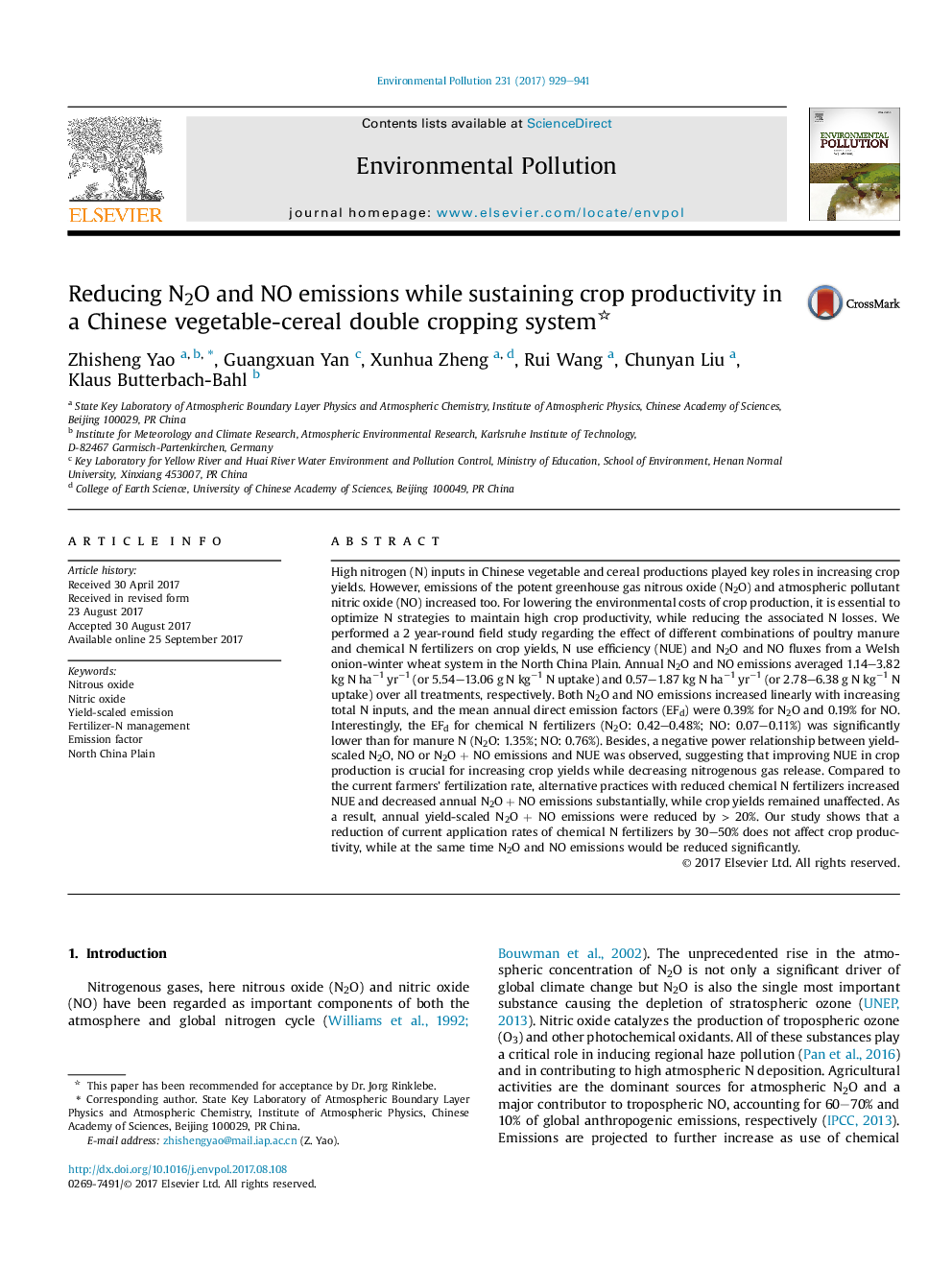| کد مقاله | کد نشریه | سال انتشار | مقاله انگلیسی | نسخه تمام متن |
|---|---|---|---|---|
| 5748631 | 1619142 | 2017 | 13 صفحه PDF | دانلود رایگان |

- Both N2O and NO fluxes increased linearly with increasing N rates in calcareous soils.
- Optimized N regimes improved N use efficiency, reduced N surplus and sustained yields.
- Approx. 30-50% reductions of chemical N rate greatly reduced yield-scaled N2O + NO flux.
- There is a negative correlation between yield-scaled N2O + NO flux and N use efficiency.
High nitrogen (N) inputs in Chinese vegetable and cereal productions played key roles in increasing crop yields. However, emissions of the potent greenhouse gas nitrous oxide (N2O) and atmospheric pollutant nitric oxide (NO) increased too. For lowering the environmental costs of crop production, it is essential to optimize N strategies to maintain high crop productivity, while reducing the associated N losses. We performed a 2 year-round field study regarding the effect of different combinations of poultry manure and chemical N fertilizers on crop yields, N use efficiency (NUE) and N2O and NO fluxes from a Welsh onion-winter wheat system in the North China Plain. Annual N2O and NO emissions averaged 1.14-3.82 kg N haâ1 yrâ1 (or 5.54-13.06 g N kgâ1 N uptake) and 0.57-1.87 kg N haâ1 yrâ1 (or 2.78-6.38 g N kgâ1 N uptake) over all treatments, respectively. Both N2O and NO emissions increased linearly with increasing total N inputs, and the mean annual direct emission factors (EFd) were 0.39% for N2O and 0.19% for NO. Interestingly, the EFd for chemical N fertilizers (N2O: 0.42-0.48%; NO: 0.07-0.11%) was significantly lower than for manure N (N2O: 1.35%; NO: 0.76%). Besides, a negative power relationship between yield-scaled N2O, NO or N2O + NO emissions and NUE was observed, suggesting that improving NUE in crop production is crucial for increasing crop yields while decreasing nitrogenous gas release. Compared to the current farmers' fertilization rate, alternative practices with reduced chemical N fertilizers increased NUE and decreased annual N2O + NO emissions substantially, while crop yields remained unaffected. As a result, annual yield-scaled N2O + NO emissions were reduced by > 20%. Our study shows that a reduction of current application rates of chemical N fertilizers by 30-50% does not affect crop productivity, while at the same time N2O and NO emissions would be reduced significantly.
243
Journal: Environmental Pollution - Volume 231, Part 1, December 2017, Pages 929-941